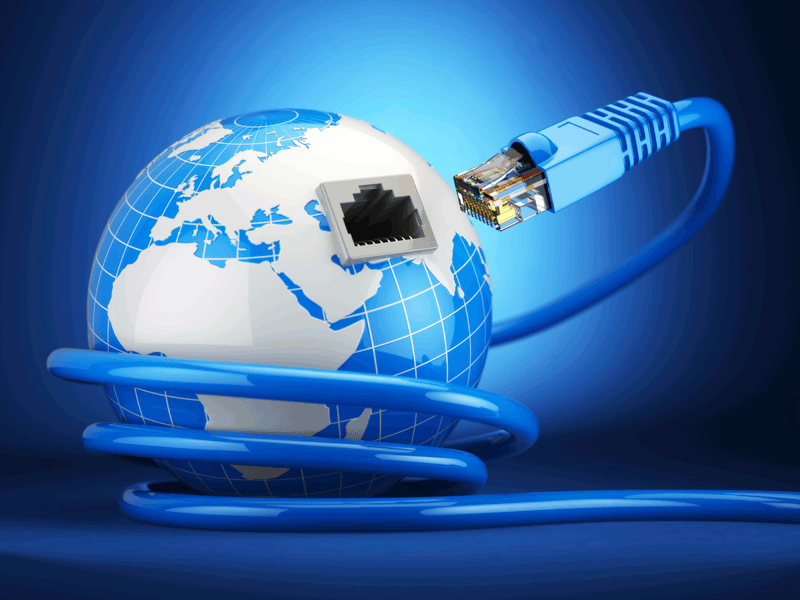In today’s digital age, broadband connectivity has become a fundamental necessity, not just for communication but as a gateway to lifelong learning. Access to high-speed internet opens up a wealth of educational resources, enabling individuals to pursue knowledge and skills at any stage of life. This article explores the critical role of broadband connectivity in facilitating lifelong learning, its impact on personal and professional development, and the challenges and opportunities that lie ahead.
The Importance of Broadband Connectivity

1. Expanding Access to Educational Resources
Broadband connectivity significantly broadens access to a variety of educational materials:
- Online Courses: Platforms like Coursera, edX, and Khan Academy offer courses from prestigious institutions, making quality education accessible to anyone with an internet connection.
- E-books and Journals: High-speed internet allows users to access a vast range of e-books, academic journals, and research papers, fostering self-directed learning.
- Webinars and Workshops: Many organizations host online webinars and workshops, providing opportunities for real-time learning and interaction with experts.
2. Supporting Diverse Learning Styles
Broadband connectivity caters to various learning preferences:
- Multimedia Content: Videos, podcasts, and interactive simulations appeal to different learning styles, making education more engaging and effective.
- Collaborative Learning: Online forums and group projects enable learners to collaborate, share ideas, and gain diverse perspectives, enhancing the learning experience.
- Personalized Learning Paths: With online resources, individuals can tailor their learning experiences to suit their interests and pace, promoting lifelong learning.
3. Bridging the Skills Gap
In a rapidly changing job market, broadband connectivity plays a crucial role in bridging the skills gap:
- Skill Development: Individuals can access training programs and certifications that align with industry demands, improving employability and career prospects.
- Reskilling and Upskilling: As technology evolves, lifelong learners can stay relevant by acquiring new skills through online courses and resources.
- Networking Opportunities: Online platforms connect learners with professionals and mentors in their field, facilitating networking and career advancement.
The Impact of Broadband on Lifelong Learning
1. Enhancing Educational Equity
Broadband connectivity is essential for promoting educational equity:
- Access for All: High-speed internet reduces disparities in access to educational resources, particularly for marginalized communities and rural areas.
- Inclusive Learning Environments: Online learning platforms can accommodate diverse learners, including those with disabilities, by providing accessible content.
2. Fostering a Culture of Continuous Learning
Broadband connectivity encourages a culture of continuous learning:
- Lifelong Learning Mindset: Easy access to information inspires individuals to adopt a mindset of lifelong learning, seeking knowledge beyond formal education.
- Community Engagement: Online forums and social media groups foster communities of learners who share resources, support each other, and promote collaborative learning.
3. Economic Growth and Innovation
Broadband connectivity contributes to economic growth by fostering innovation:
- Entrepreneurship: Access to online resources and training empowers individuals to start their own businesses and pursue entrepreneurial ventures.
- Remote Work Opportunities: High-speed internet enables remote work, allowing individuals to balance work and learning while contributing to the economy.
Challenges to Broadband Connectivity
1. Digital Divide
Despite the benefits, challenges remain in achieving universal broadband access:
- Geographic Disparities: Rural and underserved areas often lack reliable broadband infrastructure, limiting access to educational resources.
- Affordability: The cost of internet service can be a barrier for low-income households, preventing equitable access to lifelong learning opportunities.
2. Digital Literacy
Access to broadband alone is not enough; digital literacy is essential:
- Navigating Online Resources: Individuals must possess the skills to effectively navigate online platforms and evaluate the credibility of information.
- Technical Skills: As technology evolves, learners need to develop technical skills to utilize digital tools and resources effectively.
Opportunities for the Future
1. Investment in Infrastructure
To overcome challenges, investment in broadband infrastructure is crucial:
- Public-Private Partnerships: Collaborations between governments and private companies can expand inca broadband access to underserved areas.
- Community Initiatives: Local organizations can work to improve internet access and provide digital literacy training to empower communities.
2. Innovative Learning Solutions
Leveraging technology can enhance lifelong learning opportunities:
- Adaptive Learning Technologies: AI-driven platforms can provide personalized learning experiences, catering to individual needs and preferences.
- Mobile Learning: As smartphones become more prevalent, mobile learning solutions can reach learners in remote areas, facilitating education on-the-go.
3. Lifelong Learning Policies
Governments and organizations can promote lifelong learning through supportive policies:
- Funding for Education: Increasing funding for online education initiatives can expand access to high-quality resources.
- Incentives for Skill Development: Providing incentives for individuals and organizations to invest in training and development can encourage a culture of lifelong learning.
Conclusion
Broadband connectivity is a vital gateway to lifelong learning, empowering individuals to access educational resources, develop skills, and foster a culture of continuous learning. While challenges such as the digital divide and the need for digital literacy persist, the opportunities for growth and innovation are immense.
By investing in broadband infrastructure, promoting digital literacy, and embracing innovative learning solutions, we can create a more equitable and informed society. As we move forward, ensuring that everyone has access to high-speed internet will be essential in unlocking the full potential of lifelong learning for all.
Read Also About School administration plays a crucial role in shaping the educational experience for both students and staff.



